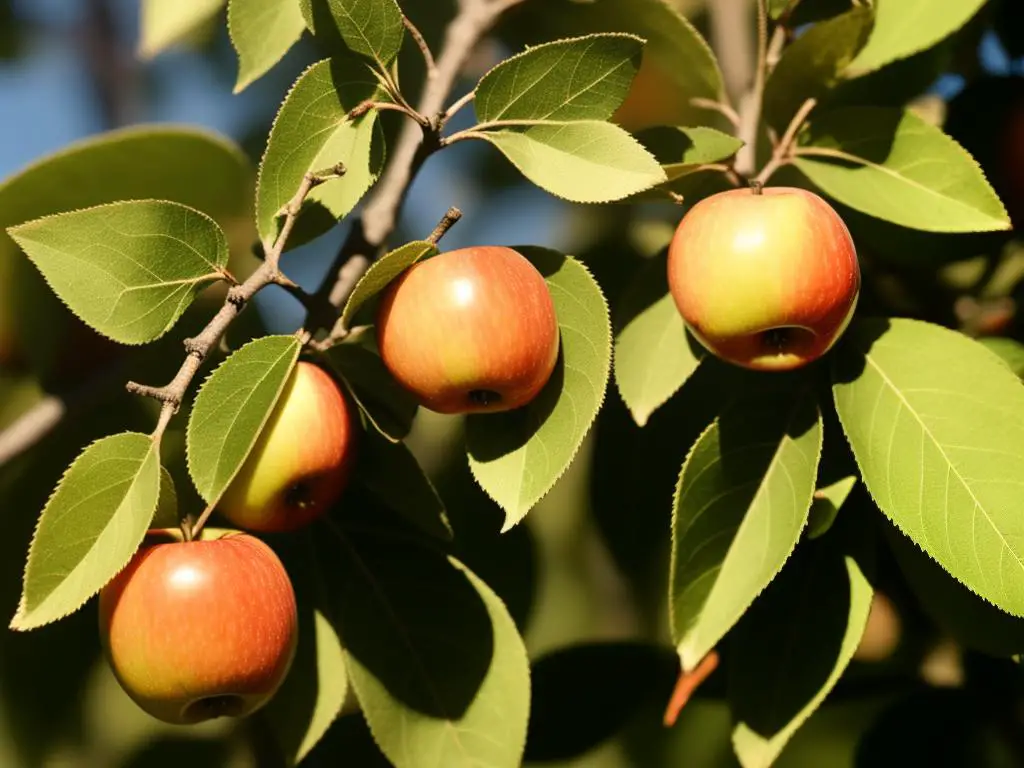Apple trees, known for their bountiful fruit and integral part in many orchards, are not without their share of challenges. One of these challenges is the occurrence of orange spots on the leaves – an alarming sight for any apple tree owner. This issue, though common, can hold a variety of causes and dangerous implications. The presence of these orange spots, their specific characteristics, potential causes, and the ways they can affect the tree’s overall health and fruit production, demand our attention.
Identifying Factors Behind Orange Spots
Identifying Factor: Size of Orange Spots
The size of the orange spots on apple tree leaves can vary considerably. These spots may appear as small punctures no bigger than a pinhead, while some larger spots may appear to dominate entire sections of the leaf’s surface. The spots can expand over time, especially if they are left untreated. The orange spots can sometimes clump together to form large blotches on the surface of the leaves.
Understanding Color Variations
The color of these spots also varies. Initially, they may present as light yellow or orange. As the condition progresses, the color may intensify into a deeper orange, rusty brown, or even a reddish tint. This progression can provide a clue as to the severity and stage of the disease causing the spots.
Location of Orange Spots
The location of the orange spots on apple tree leaves can be an important diagnostic indicator as well. The spots typically appear on the upper surface of the leaves but they can also be found on the underside. It is also common for the spots to appear around the leaf veins or along the edges of the leaf. They are not typically confined to any one segment of the tree, and if left unchecked, can spread rampantly from leaf to leaf and branch to branch.
Seasonal Appearance of Orange Spots
The orange spots on apple tree leaves often exhibit a seasonal pattern. While they can appear at any time of year, they most commonly emerge during the late spring and early summer months. During this time, the warm, humid environment provides an ideal breeding ground for the fungi or pests causing these spots. The appearance and spread of these spots can slow down during the fall and winter months, as these conditions are less conducive to the spread of fungi and other pests.
Determining the Cause
The most common cause of orange spots on apple tree leaves is usually a fungal disease known as Cedar Apple Rust. Other potential causes can include fungal conditions like Apple Scab and Fire Blight, or pests such as aphids, mites, and leafrollers. Each of these conditions has specific symptoms and may require different treatment methods. It is important to identify the exact cause accurately in order to implement the correct treatment.
Overview and Remediation of Orange Leaf Spots
Effectively addressing the issue of orange spots on apple tree leaves necessitates a combination of well-timed applications of fungicides, controlled irrigation techniques, and meticulously removing the infected leaves and branches. Additionally, the introduction of natural predators such as ladybugs and lacewings can effectively control insect pests. Keeping the tree healthy through judicious fertilization and care can also deter the reappearance of these orange spots.
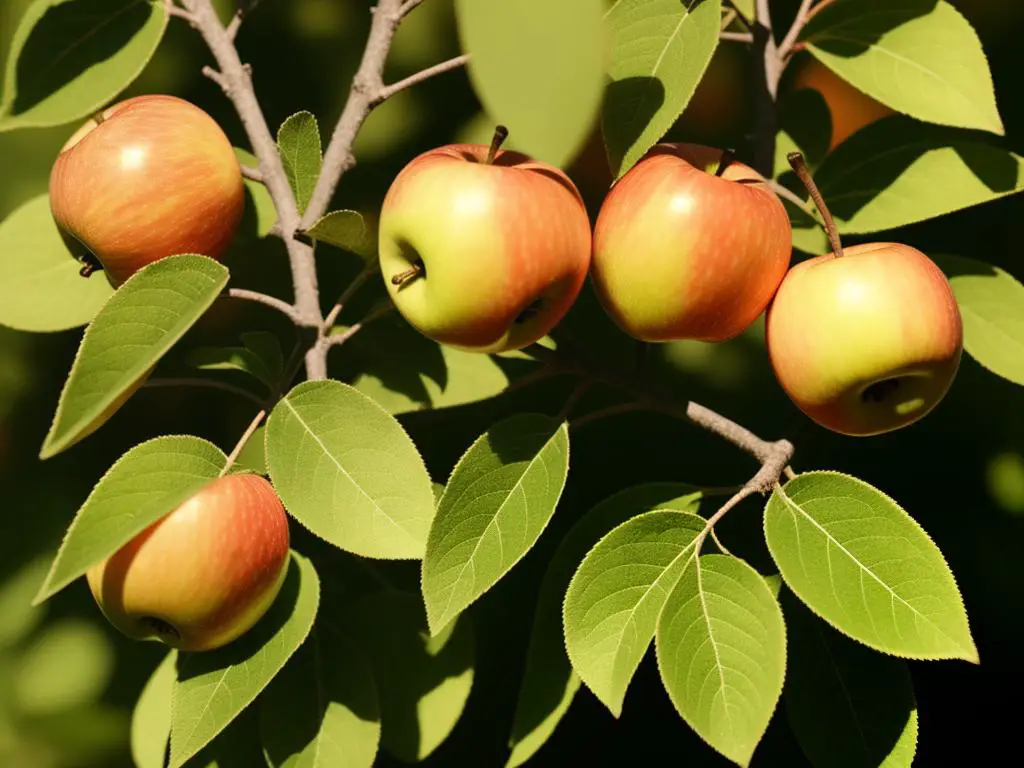
Common Causes of Orange Spots
Decoding the Enigma of Orange Spots on Apple Tree Leaves
There are numerous reasons why you might notice orange spots gracing your apple tree leaves. Most commonly, these spots are the collateral damage left by insect invasions. Pests such as aphids, leafhoppers, or mites, secrete a substance known as honeydew after feasting on the tree. If the honeydew remains on the foliage, it can provide the perfect environment for sooty mold proliferation, consequently leading to orange spotting. These small invaders might also inflict leaf damage, curling, and other discoloration, potentially causing defoliation if left unchecked.
Alternatively, the spots could signal the emergence of fungal infections—specifically apple scab and cedar apple rust. Apple scab, triggered by the fungus Venturia inaequalis, usually starts as greenish-black spots, ultimately adopting an orange hue into the late season. Cedar apple rust, caused by Gymnosporangium juniperi-virginianae, contributes to the orange spots problem too, presenting as yellow-orange spots usually on the leaf’s upper surface. The infection spreads its spores from diseased to healthy trees, primarily during wet weather conditions.
Never underestimate the power of environmental factors either. Sometimes, orange spots are simply the mark left by a deficiency or surplus of specific nutrients in the soil, such as potassium, zinc, magnesium, or iron. Such imbalances often lead to chlorosis, a condition where leaves produce insufficient chlorophyll, and they subsequently turn yellow or, in some cases, orange.
Weather fluctuations, incorrect watering practices, extreme temperatures may also be the culprits, causing leaf scorching and subsequent orange spots. Additionally, plant stress, from over-fertilization, improper pruning, or pollutant exposure, can leave the tree more vulnerable to diseases, pests, and environmental crises that might cause orange spots to emerge.
In essence, orange spots on apple tree leaves can spring from various origins like pests, fungal diseases, soil nutrient imbalance, environmental challenges, or plant health issues. Detecting and treating these spots is directly linked to pinpointing the true cause. Regular tree assessments, suitable watering and fertilizing practices, using disease-resistant apple varieties, and appropriate pruning can help to keep your tree healthy and minimize the threat of orange spots.
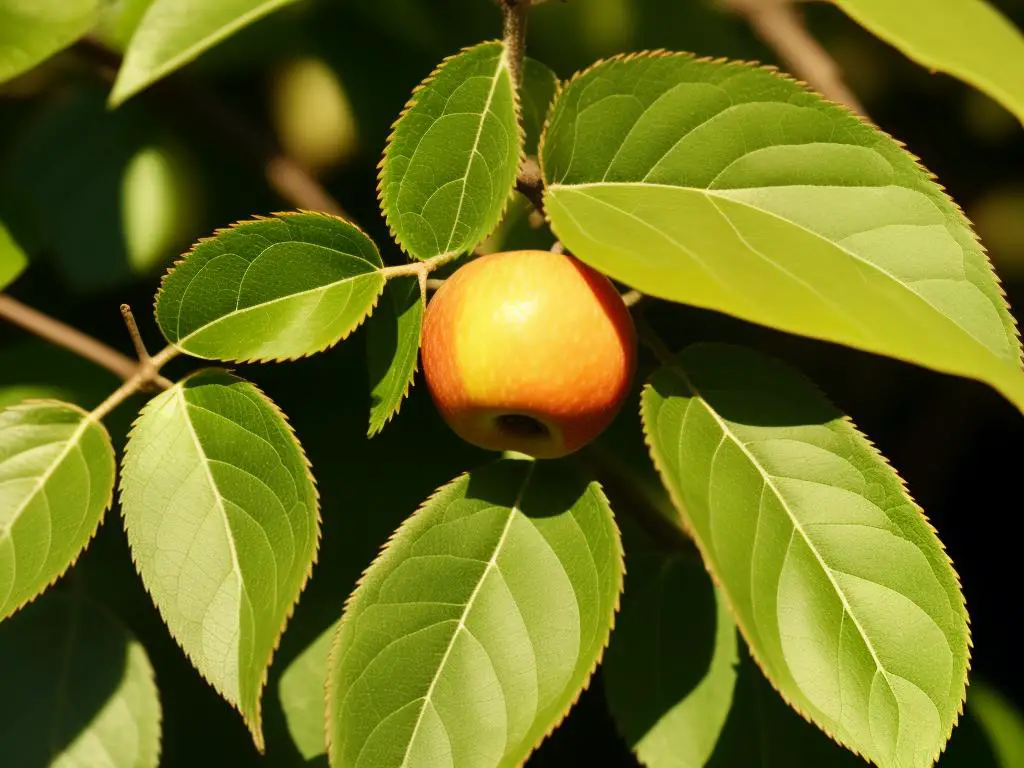
Impact of Orange Spots on Tree Health & Fruit Production
Apple trees, like all living organisms, experience health challenges and often signal these through changes in their leaves’ shape, texture, or color. One such indication could be the development of orange spots, turning the usually green canvas of leaves into a seemingly autumnal spectacle.
Symptoms of Orange Spots on Apple Leaves
The orange spots are not merely a color change, but in fact a fungal infection. These spots typically appear on the underside of the leaves and begin as small, speck-like dots. As the disease progresses, these spots can grow and merge together, forming larger, uneven areas of discoloration. In severe cases, they can also appear on the fruit and stems of the apple tree.
The Cause of Orange Spots: Rust Disease
One of the main culprits of orange spots on apple trees is a disease known as rust. Rust diseases are brought about by different types of fungi that all produce similar symptoms. These include Cedar Apple Rust (caused by the fungus Gymnosporangium juniperi-virginianae), Quince Rust (caused by Gymnosporangium clavipes), and Haworthia Apple Rust (caused by Gymnosporangium globosum).
Impact on Tree Health
These rust diseases can have a profound impact on the overall health of an apple tree. In addition to the visual implications, orange spots can significantly reduce the photosynthetic capacity of the leaves, affecting the tree’s ability to convert sunlight into needed nutrients. This, in turn, can threaten the tree’s survival.
In serious cases, the orange spots can cause early leaf drop, further reducing the tree’s overall health and vigor. Should the infection keep recurring, this could stress the tree over time, possibly leading to its death.
Impact on Fruit Production
The presence of orange spots can also influence the tree’s fruit production. Even if the infection itself does not directly affect the fruit, the overall decrease in the tree’s health can lead to fruit that is smaller, less plentiful, and has dramatically diminished taste and quality.
Should the rust spores spread to the fruit, it could lead to premature rotting or allow entry points for other pests and diseases.
Managing Orange Spots on Apple Trees
Your best defense against controlling orange spots on apple trees is a combination of prevention and active management. Be sure to regularly inspect your trees, paying extra attention during periods of high humidity and dampness, as these conditions can contribute to an outbreak. If you notice any issues, promptly remove and prune infected leaves and consider using a fungicide as necessary.
Observing cultural practices is essential in preventing spores from spreading and causing more infections. This includes ensuring proper plant spacing and watering methods, such as watering at the base of the tree instead of overhead. Another valuable consideration is the planting of apple tree varieties that have shown resistance to orange spots, as this could bypass the issue entirely.
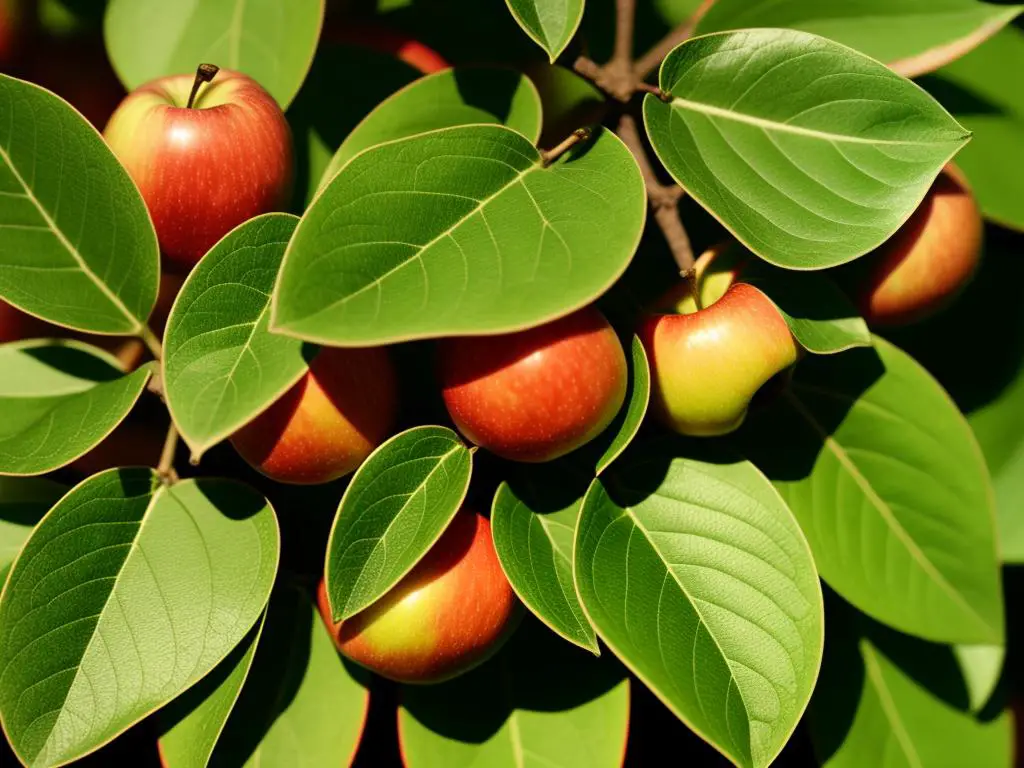
Preventive Measures & Treatment Options
Prevention Practices Against Orange Spots on Apple Trees
Applying effective preventive strategies can significantly help you avoid the issue of orange spots on your apple tree leaves. Regularly inspect your tree for any signs of disease or pests, especially during the spring and early summer months. Prompt action should be taken at the first sign of any abnormalities.
Keeping a clean and tidy environment around your apple tree is also critical. Be sure to remove any fallen leaves, fruit, and other debris that could potentially harbor diseases or pests. Regular pruning of the tree can enhance air circulation and minimize the likelihood of orange spots appearing.
Supporting the health of your tree with balanced fertilizers and employing appropriate watering techniques is crucial. Over-watering can lead to a plethora of diseases, including those that cause orange spots.
Lastly, consider using a protective fungicide spray as an extra preventative measure. Particularly apply this in early spring or following prolonged wet periods which can heighten the risk of fungal diseases.
Identifying and Treating Orange Spots on Apple Tree Leaves
Leaf spot diseases are a common affliction for apple trees, often marked by orange or yellow spots on leaves. Cedar-apple rust is one such disease that causes orange spots. If the spots take a yellow hue and start to pucker or blister, your apple tree could have apple scab.
Maintaining a regular fungicide treatment program can effectively control these diseases. Those with active ingredients such as Myclobutanil or Propiconazole are marketed as systemic fungicides and can manage cedar-apple rust and apple scab.
If only a few leaves are affected, removing and properly disposing of them can often control the problem. Don’t compost these leaves; the disease can survive and infect other plants.
When to Seek Professional Help
In severe cases, professional help might be necessary. As these symptoms can be similar to other afflictions, accurately identifying the cause can help provide the right treatment. Arborists, tree surgeons, or tree care companies have the knowledge and expertise to ensure the disease is correctly diagnosed and treated. In addition, their professional pruning methods can increase a tree’s resistance to future infections.
Remember, observing and maintaining your tree’s health is key. Effective prevention and treatment methods can ensure that your apple tree remains healthy, free from orange spots, and productive.
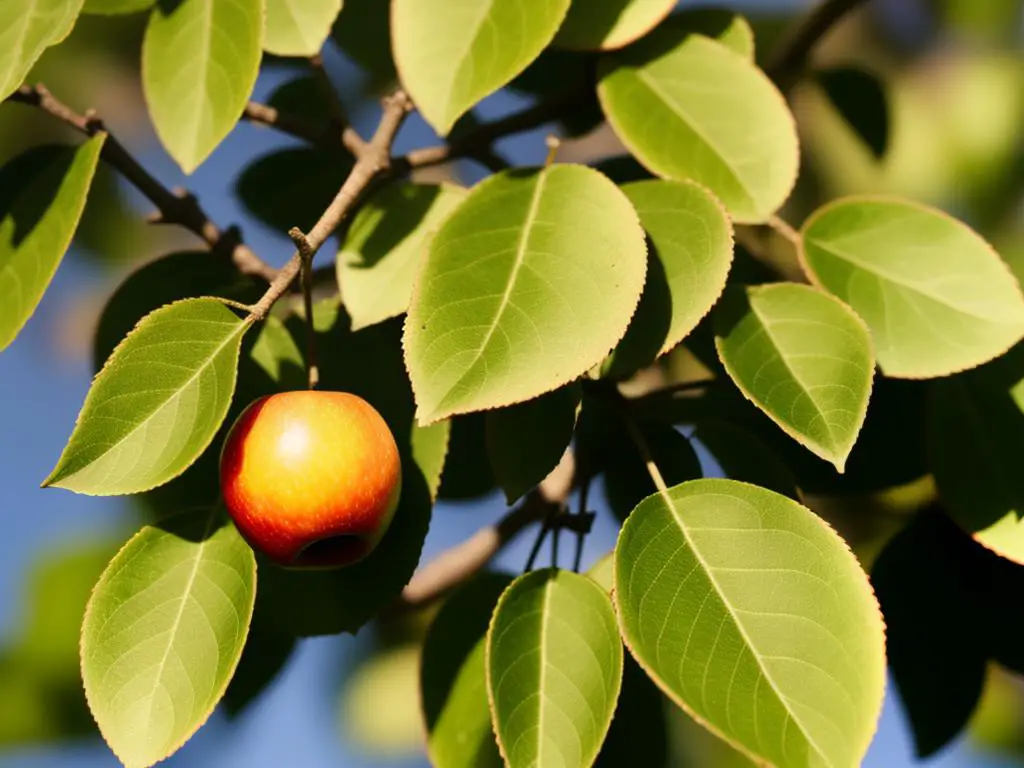
Despite the concerning nature of orange spots on apple tree leaves, understanding their causes and knowing how to manage them can make a significant difference. A well-informed approach is the key to preserving the health and productivity of the orchard. Prevention and prompt treatment are essential, and seeking professional help when needed can ensure proper care for these majestic fruit providers. Informed tree care not only safeguards the health of individual trees but also contributes to a thriving, productive orchard overall.
